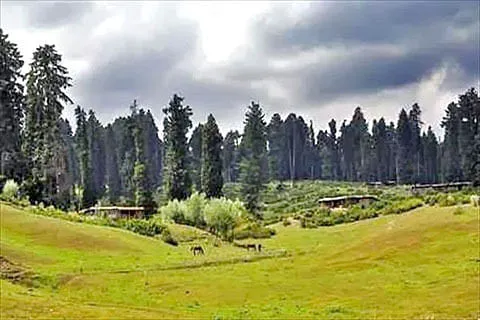Aijaz Ahmad
Kashmir is known for its scenic beauty, its picturesque landscapes, breathtaking mountain ranges, serene lakes, snowcapped mountains, lush greenery, and rich cultural heritage. The region, located in the northernmost part of India, is blessed with natural resources and has enormous potential to generate revenue through various sectors, including tourism, agriculture, handicrafts, and forestry. Tourism is one of the most prominent sectors in Kashmir, which has been contributing significantly to the local economy over the years. The industry provides direct and indirect employment to thousands of locals, facilitates cultural exchange, and promotes economic development in the region.
According to the Jammu and Kashmir Tourism Department, the region witnessed a surge in domestic and international tourist arrivals in recent years. Jammu & Kashmir records 1.89 crore tourist arrivals upto December 2022, highest in 75 Years. A Comprehensive Tourism Policy has been drawn in the year 2020 which among other things aims to generate employment of approximately 50 thousand people per year and to attract average investments target of Rs 2000 Crore per year for the next 5 years. Tourism industry in the state of Jammu and Kashmir generates around Rs. 8,000 crores annually, contributing to nearly 7% of the state’s GDP. The industry provides employment to around 70,000 people directly and indirectly, including hotel staff, tour operators, taxi drivers, and souvenir vendors. The numbers are a testimony to the potential of the sector to boost local economy and provide employment opportunities.
Despite intermittent political unrest, tourism has been flourishing in the valley due to the beautiful and serene landscapes and rich cultural heritage that it offers. The Himalayan ranges, the Dal Lake, Shalimar Bagh, Nishat Bagh, Pari Mahal, and Gulmarg are some of the popular tourist attractions that have been drawing visitors from around the world.
The tourism industry has the potential to uplift the local economy of Kashmir and create job opportunities for the residents. However, there are few challenges that the sector needs to address to realise its full potential. For instance, the lack of basic infrastructure facilities like roads, electricity, and connectivity in certain areas which are essential for the smooth operation of tourism businesses.
To overcome these challenges, the state government and stakeholders must think beyond the conventional approaches and focus on developing sustainable tourism practices. For example, focusing on eco-tourism, adventure tourism, and cultural tourism can help in diversifying the tourist footfall throughout the year, generating revenue, and offering employment opportunities at the grass-root level.
Moreover, promoting international tourist arrivals through aggressive marketing and branding of the region can help to create a global brand image of Kashmir as the preferred tourist destination, which can pave the way for large-scale investments in the sector.
Apart from tourism, agriculture is another crucial sector that holds enormous potential to bolster the local economy of Kashmir. The region has a favourable climate and vast agricultural land for producing a variety of crops such as apples, walnuts, saffron, and other horticulture and floriculture products. However, there is a need to upgrade the traditional farming practices and provide access to modern technology, equipment, and market to the farmers to boost the production and export of agricultural products.
Wood carving is another traditional handicraft sector that has great potential to generate employment and revenue for the locals. The region has skilled artisans who produce intricate carvings and furniture that command a significant price in the global market. However, the sector needs government support in terms of infrastructure development, skill enhancement, and marketing to tap into its full potential.
In conclusion, the prosperity of Kashmir depends on the sustainable growth of various sectors such as tourism, agriculture, handicrafts, and forestry. The key to unlocking the potential of these sectors is through government support, infrastructure development, skill enhancement, access to finance and technology, and market linkage. Moreover, the focus should be on promoting eco-friendly tourism practices, conserving natural resources, preserving local culture and heritage, and ensuring equitable distribution of the benefits of economic development. With these measures, Kashmir can become a shining example of economic and social development, and a source of pride for its residents.
Aijaz Ahmad, J&K Bank Official
Disclaimer: The views and opinions expressed in this article are the personal opinions of the author. The facts, analysis, assumptions and perspective appearing in the article do not reflect the views of GK.






